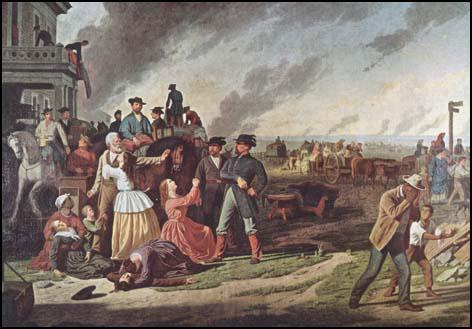Ewings Order No 11
William Quantrill joined the Confederate Army on the outbreak of the American Civil War. He fought at Lexington but disliked the regimentation of army life and decided to form a band of guerilla fighters. As well as attacking Union troops the Quantrill Raiders also robbed mail coaches, murdered supporters of Abraham Lincoln and persecuted communities in Missouri and Kansas that Quantrill considered to be anti-Confederate. He also gained a reputation for murdering members of the Union Army that the gang had taken prisoner.
By 1863 William Quantrill was the leader of over 450 men. This included Frank James, Jessie James, Cole Younger and James Younger. With this large force he committed one of the worst atrocities of the Civil War when he attacked the town of Lawrence. During the raid on 21st August, 1863, Quantrill's gang killed 150 inhabitants and destroyed over 180 buildings.
The district Union commander, General Thomas Ewing, was furious when he heard what the Quantrill Raiders had done. On 25th August 1863, he issued Order No 11. This gave an eviction notice to all people in the area (Jackson, Cass, Bates and Vernon counties) who could not prove their loyalty to the Union cause. Ewing's decree virtually wiped out the entire region. The population of Cass County dropped from 10,000 to 600.
An officer in the Union Army, George Caleb Bingham, was appalled by the consequences of Order No 11 and wrote to General Thomas Ewing saying: “If you execute this order, I shall make you infamous with pen and brush". In 1868 Bingham painted a picture on Ewing's crime. Frank James, who had taken part in the Kansas raid, commented: "This is a picture that talks."

